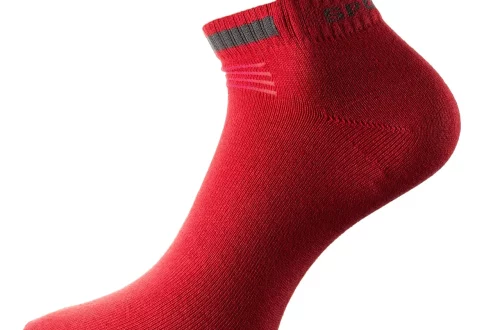
The Ultimate Guide to the Best Fly Spray for Your Needs
Insect pests can be a significant nuisance, especially during warmer months when outdoor activities are at their peak. One of the most common culprits is the fly, which not only disrupts peace but can also pose various health risks. Flies are known carriers of pathogens and can contaminate food and surfaces, making their presence in homes and businesses a serious concern. As a result, finding effective ways to manage and eliminate these pests has become essential for many individuals and property owners.
The market is flooded with various fly sprays, each claiming to be the best solution for your fly problem. The challenge lies in determining which product is truly effective. Factors such as the type of flies you’re dealing with, the environment in which you live, and your personal preferences regarding ingredients and application methods all play a crucial role in selecting the right fly spray. Whether you’re looking for a chemical-based solution or a more natural approach, it’s vital to understand what options are available and how to use them effectively.
In navigating the myriad of choices, informed decisions can lead to better results. This guide aims to provide insights into the different types of fly sprays, their effectiveness, and how to choose the right one for your specific needs.
Understanding Different Types of Fly Sprays
When it comes to fly sprays, there are generally two main categories: chemical and natural. Each type has its own set of pros and cons, and understanding these can help you make an informed choice.
Chemical fly sprays are typically made with synthetic ingredients designed to target and eliminate various types of flies effectively. These products often contain active ingredients such as pyrethroids, which are derived from chrysanthemum flowers but are synthesized for greater potency. Chemical sprays are often favored for their quick action and long-lasting effects, making them suitable for heavy infestations. However, they may pose risks to human health and the environment. It’s essential to follow the manufacturer’s instructions carefully to minimize exposure and ensure safety.
On the other hand, natural fly sprays use organic ingredients that are less harmful to humans and pets. These sprays often contain essential oils like citronella, peppermint, or eucalyptus, which are known for their repellent properties. While natural sprays might not be as immediately effective as their chemical counterparts, they offer a more sustainable solution for those looking to minimize their chemical footprint. Additionally, natural sprays can be used in more sensitive environments, such as homes with children or pets.
When choosing between these two types, consider your specific needs and the environment in which you’ll be using the spray. If you have a severe fly problem in a commercial setting, a chemical spray may be necessary. However, for household use, particularly in areas where children and pets are present, a natural spray might be the better option.
Key Features to Look for in Fly Sprays
Selecting the right fly spray goes beyond just choosing between chemical and natural options. Several key features can enhance a spray’s effectiveness and usability. Understanding these features will help you find a product that meets your unique needs.
First, consider the spray’s range and coverage. Some fly sprays are designed for targeted application, while others can cover larger areas. If you’re dealing with a widespread infestation, a product that offers a broader spray pattern will be more effective. Look for sprays that have adjustable nozzles or those designed for fogging, which can disperse the solution over a wider area.
Next, think about the duration of effectiveness. Some sprays offer residual effects that continue to kill or repel flies even after the initial application. This is particularly beneficial in outdoor environments where flies are likely to return. However, be cautious with residual sprays, as prolonged exposure to chemicals can have health implications.
Additionally, consider the ease of use. Many modern fly sprays come in ready-to-use bottles, while others may require dilution or mixing before application. Opt for a product that fits your comfort level and ensures you can apply it safely and effectively.
Lastly, check for any safety certifications or eco-friendly labels. Many consumers are becoming increasingly aware of the importance of sustainability and safety. Products that are certified organic, biodegradable, or free from harmful chemicals can provide peace of mind while effectively tackling your fly problem.
How to Apply Fly Spray Effectively
Applying fly spray effectively is crucial for achieving the best results. Regardless of the type of spray you choose, proper application techniques can make a significant difference in how well the product works.
Before application, it’s essential to read the instructions on the label carefully. Different products may have specific guidelines that maximize their effectiveness. Generally, it’s best to apply the spray during the early morning or late evening when flies are most active and likely to come into contact with the spray.
When applying the spray, maintain a safe distance from surfaces and people. For indoor use, ensure that windows and doors are closed to prevent the spray from drifting. Apply the product in a sweeping motion, aiming for areas where flies are most likely to congregate, such as windowsills, door frames, and trash areas.
For outdoor applications, consider the wind direction. Spraying against the wind can help ensure that the product lands where it’s needed without being carried away. Additionally, be mindful of nearby plants and wildlife if you’re using chemical sprays, as they can be harmful to non-target species.
After application, it’s important to allow the area to dry before re-entering. This not only ensures the spray has had time to work but also minimizes any potential health risks associated with exposure to the chemicals.
In summary, understanding the correct application techniques can enhance the effectiveness of your chosen fly spray, helping you achieve a fly-free environment.
Natural Alternatives to Chemical Fly Sprays
For those who prefer a more eco-friendly approach, several natural alternatives to conventional fly sprays can effectively deter flies without the use of harsh chemicals. These methods often rely on natural ingredients that are known for their repellent properties.
One popular option is using essential oils. Oils like lavender, peppermint, and eucalyptus are particularly effective at repelling flies. You can create a simple fly repellent by mixing a few drops of essential oil with water in a spray bottle. This mixture can be sprayed around entry points and areas where flies are commonly seen.
Another effective natural deterrent is vinegar. The strong scent of vinegar can be off-putting to flies. A simple trap can be made by filling a bowl with vinegar and adding a few drops of dish soap. The soap breaks the surface tension, causing flies to sink and drown. This method is great for catching individual flies without the use of harmful chemicals.
Herbs can also play a role in fly control. Planting herbs such as basil, mint, or marigolds around your home can naturally deter flies. Not only do they add beauty to your garden, but their scents are also unappealing to these pests.
Moreover, maintaining cleanliness is crucial. Regularly cleaning surfaces, removing food scraps, and properly sealing trash can significantly reduce fly attraction. Natural fly traps, such as fruit traps or homemade bait, can also be effective without resorting to chemical sprays.
In conclusion, natural alternatives offer effective solutions for those looking to manage fly populations without compromising health or the environment.
In closing, while this guide provides valuable insights into selecting and using fly sprays, it is important to remember that individual results may vary. For specific health concerns or persistent pest issues, it’s always advisable to consult with a professional pest control service or a healthcare provider.




